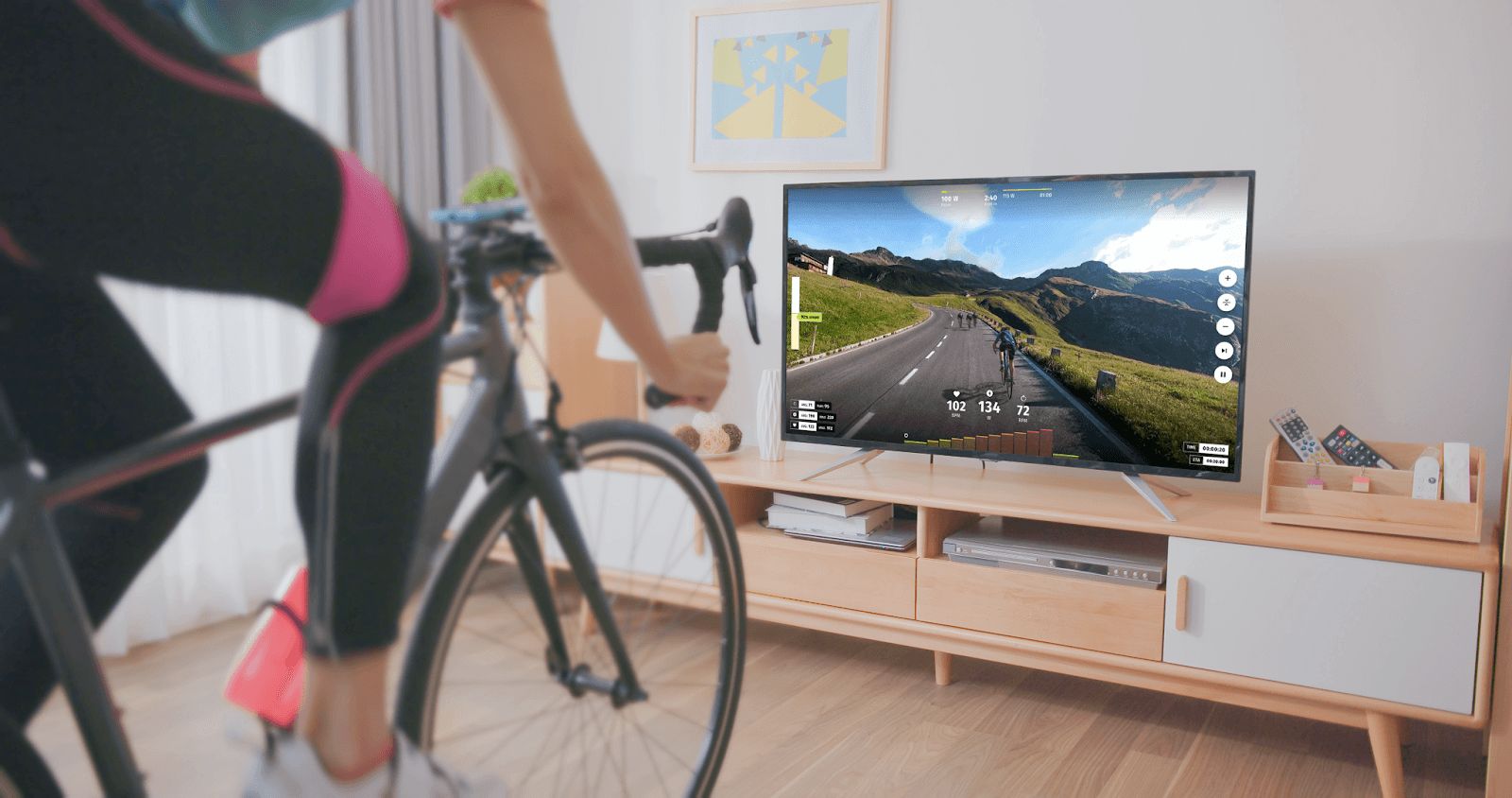Since gaining traction in the mid 1990’s, spinning classes held in fitness studios have remained among the most popular methods of getting cardiovascular exercise indoors. In recent years, though, there’s been a significant shift towards indoor cycling. Thanks to the evolution of high-tech apps like ROUVY, today’s indoor cycling is a far cry from its ancestor: that dusty, old stationary bike.
In this blog, we'll look at the difference between spinning and indoor cycling to help you choose the best indoor cycling method for your needs.
Traditional Spinning Classes
Spinning classes have been a staple in fitness centers for decades now. Led by instructors, these in-person classes offer a structured workout in a group setting. Fans of spinning find motivation in:
THE GROUP DYNAMIC. Spinning classes offer a sense of camaraderie and motivation that comes from exercising in a group setting.

The energy of fellow participants and the encouragement from the instructor can push you to work harder than you might on your own.
INSTRUCTOR GUIDANCE. In spinning classes, instructors lead participants through a series of routines that include variations in intensity, speed, and resistance. The instructor's guidance ensures that participants follow a well-rounded workout that targets different muscle groups and provides both cardiovascular and strength benefits.
REAL-TIME FEEDBACK. During spinning classes, instructors provide real-time feedback on form and technique, helping participants optimize their cycling posture and pedal stroke. This personalized attention can prevent injuries and improve overall performance.
SPINNING CLASSES: A POTENTIAL DRAWBACK. A drawback of traditional spinning classes is their fixed schedule. Participants must adhere to specific class times, which don’t always align with their busy lifestyles. Spinning also requires traveling to whatever club or fitness center is hosting the class. For those comparing spinning classes vs. virtual cycling, this scheduling constraint can be a major deciding factor.
Indoor Cycling Apps
Today’s indoor cycling apps offer a different approach, leveraging technology to create immersive virtual experiences, with ROUVY leading the industry when it comes to realism.

Here’s an indoor cycling comparison that highlights how apps stack up against traditional spinning classes:
FLEXIBILITY AND CONVENIENCE. Perhaps the most significant advantage of indoor cycling apps is the flexibility they offer. Users can cycle at home whenever they want, eliminating the need to adhere to preset class schedules. This flexibility makes it easy to integrate indoor cycling into your busy schedule – a key difference between spinning and indoor cycling.
INTERACTIVE VIRTUAL ENVIRONMENT. ROUVY provides users with an interactive virtual environment where you can ride more than 1,500 real routes alongside other cyclists from around the world. These virtual routes simulate real-life terrain, complete with hills, descents, and scenic landscapes. The immersive experience adds an element of excitement and engagement to indoor cycling sessions.






